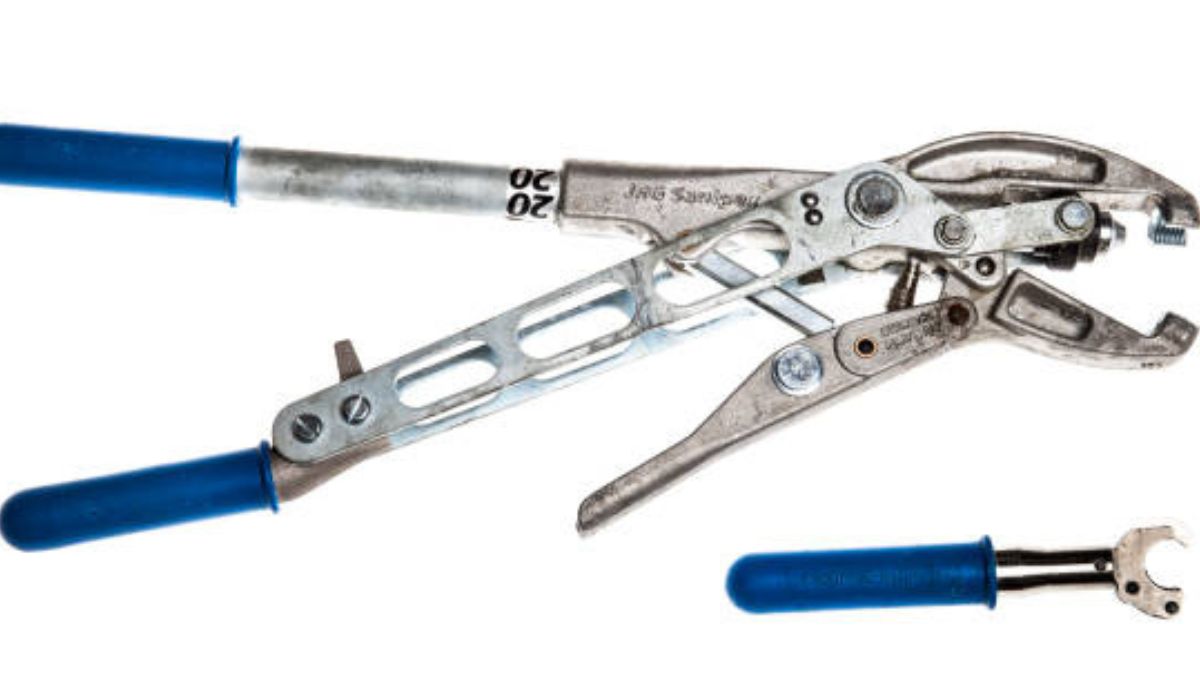When it comes to maintaining your vehicle, the small components often make the biggest difference. One such component that doesn’t always get the attention it deserves is the CV boot. This unassuming piece of rubber protects crucial parts from dirt and debris, ensuring your car runs smoothly. However, a damaged CV boot can lead to serious problems down the line if not addressed promptly. That’s where a CV Boot Clamp Tool comes into play. Having this handy tool in your garage can save you time and money by enabling you to fix leaks before they escalate into costly repairs. Whether you’re an experienced mechanic or a DIY enthusiast, understanding how to use this tool effectively is essential for keeping your vehicle in top shape.
Let’s dive deeper into why CV boots matter, how to spot potential issues early on, and discover everything you need to know about using a CV Boot Clamp Tool like a pro!
Understanding the CV Boot and Its Importance in Your Vehicle
The CV boot, or constant velocity boot, is a crucial element of your vehicle’s drivetrain. It encases the CV joint, allowing it to move freely while protecting it from dirt and moisture.
Made from durable rubber or plastic materials, its primary function is to keep lubricant in and contaminants out. This ensures that the joint operates smoothly under various driving conditions.
Without a properly functioning CV boot, the CV joint faces exposure to harmful debris. Over time, this can lead to wear and tear on the joint itself. If left unchecked, damaged boots can result in costly repairs down the road.
Additionally, a well-maintained CV boot contributes significantly to overall vehicle performance. By ensuring smooth power transfer from your engine to wheels, you enhance both handling and efficiency during drives.
Signs of a Damaged CV Boot
A damaged CV boot can lead to serious issues for your vehicle. One of the first signs is visible cracking or tearing in the rubber. If you notice any wear, it’s time to take a closer look.
Another red flag is grease leakage around the wheel area. The CV joint relies on this lubricant, and loss of grease often indicates that the boot has failed. If you find grime built up on your wheels or suspension components, it might be due to this leak.
Listen closely while driving; unusual clicking or popping sounds during turns can signal trouble with your CV joints. This noise may indicate that they are not adequately protected anymore.
Pay attention to vibrations when accelerating. A failing CV joint can result in inconsistent power transfer, leading to an uneven ride experience as you hit the gas pedal.
The Dangers of a Leaking CV Boot
A leaking CV boot can lead to serious mechanical issues. The CV boot serves as a protective cover for the constant velocity joint, keeping dirt and debris at bay. When it fails, contaminants can enter this crucial component.
Dirt and moisture cause wear and tear on the joint itself. This not only shortens its lifespan but may also result in costly repairs down the line. If left unchecked, you might find yourself facing complete joint failure.
Moreover, a compromised CV boot often leads to grease leakage. This loss of lubrication increases friction within the joint, causing overheating and further damage. Ignoring these signs could leave you stranded or create hazardous driving conditions.
Don’t underestimate the importance of addressing a leaking CV boot promptly. It’s essential for maintaining your vehicle’s performance and safety on the road.
Types of CV Boot Clamps and Their Differences
When it comes to CV boot clamps, there are several types designed for various applications. Each type has its unique features that cater to different needs and preferences.
The most common clamp is the traditional hose clamp, which uses a screw mechanism for tightening. This option is widely available and easy to use, making it popular among DIY enthusiasts.
Then there’s the zip tie-style clamp, known for its simplicity and quick installation. These clamps provide a secure fit but may not offer the same level of durability as others.
Another option is the band clamp. It requires specialized tools for application but provides an excellent seal against dirt and debris due to its robust design.
You have industrial-grade clamps made from stronger materials suitable for heavy-duty vehicles or extreme conditions. Choosing the right type depends on your vehicle’s demands and your repair expertise.
Step-by-Step Guide on How to Use a CV Boot Clamp Tool
Using a CV boot clamp tool is straightforward. First, ensure your vehicle is safely lifted and secured on jack stands.
Remove the wheel for better access to the CV joint area. Inspect the existing boot and clean any debris around it.
Next, slide the new CV boot onto the axle shaft if you’re replacing it. Position it correctly over the joint and ensure there are no twists or obstructions.
Take your CV boot clamp tool and place it around the newly positioned clamp. Adjust it so that it’s snug but not overly tight to avoid damaging the boot material.
Squeeze or tighten according to your specific tool’s instructions until you hear a click or feel resistance indicating it’s secure.
Double-check everything before reattaching components like wheels or covers. This ensures optimal performance without leaks down the road.
Tips for Choosing the Right Tool for Your Vehicle
Choosing the right CV boot clamp tool can make all the difference in your repair experience. First, consider compatibility with your vehicle’s specific model. Different cars may require unique tools.
Next, think about the type of clamps you’ll be working with. Some tools are designed for specific types of clips or bands, while others offer versatility across various styles. A multi-functional tool might save time and hassle down the line.
Look for quality materials as well. Stainless steel options tend to last longer and resist corrosion better than plastic alternatives. Durability is key when tackling automotive repairs.
Read reviews from fellow car enthusiasts or mechanics to gauge performance and reliability before making a purchase decision. Real-world feedback can provide insights that specifications often miss hidden gems or potential pitfalls.
Conclusion: Why Investing in a Quality CV Boot Clamp Tool is Worth It
Investing in a quality CV Boot Clamp Tool can save you time, money, and hassle down the road. When you take care of your vehicle’s CV boots, you’re essentially prolonging the life of crucial components like axles and joints. A reliable clamp tool ensures that repairs are done correctly, preventing future leaks and potential damage.
Cheap or ineffective tools might seem appealing at first but could lead to more significant issues later on. By choosing a high-quality CV boot clamp tool designed for your specific vehicle model, you’re ensuring durability and effectiveness in every repair.
Moreover, having this essential tool on hand makes it easier to perform maintenance tasks yourself. This not only boosts your confidence as a DIYer but also helps maintain consistent performance from your vehicle over time. After all, taking proactive steps now can help avoid costly repairs in the future.
In essence, investing wisely in a good CV boot clamp tool is definitely worth considering for any car owner looking to keep their ride running smoothly without interruptions caused by leaks or mechanical failures.











